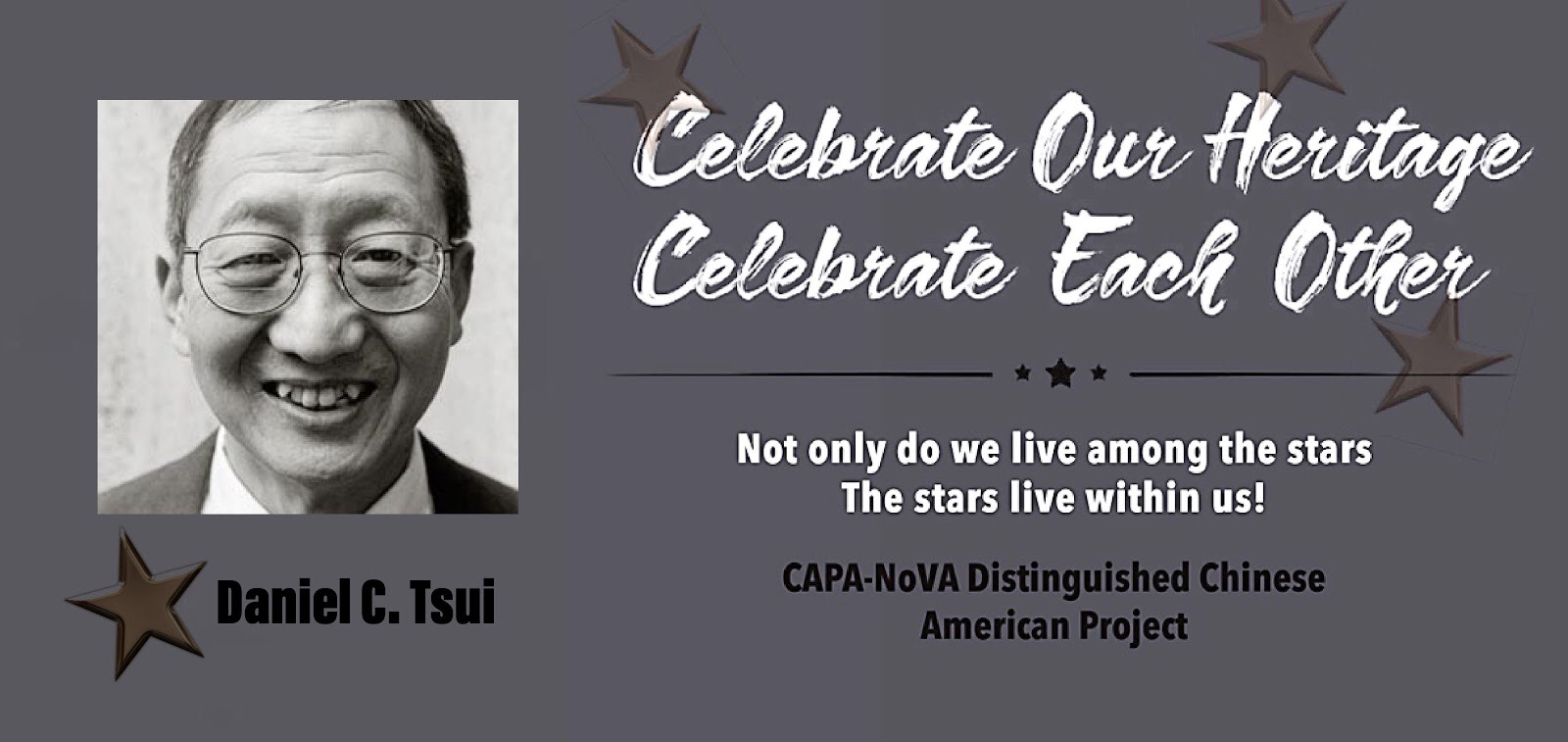【5/3/2021 】CAPA-NoVA Distinguished Chinese American Project
(Author:YuyanZhou)
崔琦(Daniel C. Tsui) (born February 28, 1939, Henan province, China), Chinese-born American physicist who, with Horst L. Störmer and Robert B. Laughlin, received the 1998 Nobel Prize for Physics for the discovery that the electrons in a powerful magnetic field at very low temperatures can form a quantum fluid whose particles have fractional electric charges. This effect is known as the fractional quantum Hall effect.
Tsui graduated from Augustana College, Rock Island, Illinois, in 1961, and he obtained a Ph.D in physics from the University of Chicago in 1967. He then joined the research staff at Bell Laboratories (Murray Hill, New Jersey), where he and Störmer made their prizewinning discovery in 1982. (In 1983 Laughlin, also of Bell Laboratories, provided the theoretical interpretation of the data.) Tsui became a professor of electrical engineering at Princeton University in 1982; he retired as professor emeritus in 2010.
Tsui and Störmer’s research at Bell Laboratories was based on the Hall effect, which is the development of a crosswise electric field in current-carrying ribbon whose surface lies perpendicular to a strong magnetic field. This transverse electric field results from the force that the magnetic field exerts on the moving particles of the electric current. In 1980, while studying the Hall effect in semiconductors at very low temperatures and in strong magnetic fields, the German physicist Klaus von Klitzing discovered that though the strength of the applied magnetic field was increased smoothly, the corresponding change in electrical resistance occurred in discrete steps or jumps, thereby displaying quantum properties. In 1982 Tsui and Störmer studied this quantum Hall effect at temperatures near absolute zero and under extremely powerful magnetic fields. They found the quantum changes in electrical potential to occur in fractional increments of the steps observed by Klitzing, a result that could not be explained by existing theoretical models. In 1983 Laughlin’s explanation of the phenomenon posited that in a powerful magnetic field, electrons condense and form a quantum fluid in which their fractional charges become observable.
In addition to the Nobel Prize, Tsui was awarded the Buckley Prize for Condensed Matter Physics in 1984 and was jointly awarded, with Störmer and Laughlin, the Benjamin Franklin Medal in Physics in 1988.
In 1964, Tsui married his school sweetheart Linda, who is a white lady. Yet at North Carolina, it was illegal back then for a Caucasian to marry a white woman. Given what happened at China during that time, they have endured a lot difficulties and hardships to stay together.
At his Nobel Prize acceptance speech, Tsui said “I tend to partition my life into three compartments: childhood years in a remote village in the province of Henan in central China, schooling years in Hong Kong, and the years since I came to attend college in the United States. The only thread connecting them is the kindness, generosity and friendship from the people around me that I have experienced all my life.”
For more information:
https://www.nobelprize.org/prizes/physics/1998/tsui/biographical/
【Not only do we live among the stars, the stars live within us! 】

a typo: “…Yet at North Carolina, it was illegal back then for a Caucasian to marry a white woman. …”
It should be “non-Caucasian”.